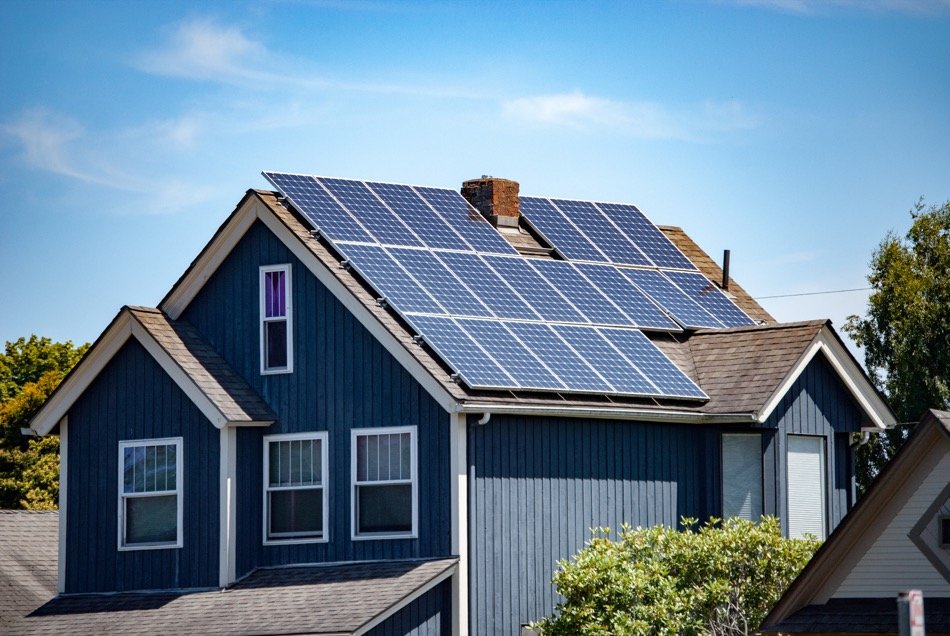How Sustainable Technology Is Impacting the Construction Industry
Posted by Edmonton Homes.ca on Friday, March 8th, 2019 at 9:36am.
 For a while, it may have seemed as though the construction industry was one that didn't react to the new trends of the day. Modern or green technology may have been used by a few select companies, but most seemed to rely on the tried and true methods that had served them so well for so long.
For a while, it may have seemed as though the construction industry was one that didn't react to the new trends of the day. Modern or green technology may have been used by a few select companies, but most seemed to rely on the tried and true methods that had served them so well for so long.
Today, sustainable technology is starting to see more adoption across the industry (even if not every company is flocking to it with the same enthusiasm). The resounding call for smarter and more sustainable building methods has been heard by developers, builders, and manufacturers alike. It's time to see which trends are garnering the attention for a better chance at predicting the housing market of tomorrow.
All-Natural Materials
A volatile organic compound (VOC) is one that can cause health problems in people exposed to it. When a child inhales fresh paint, they're getting a healthy dose of VOCs that can result in allergies, asthma, or worse. Limiting and eliminating VOCs has been a battle cry heard all around North America, and one that companies have quickly responded to. Now builders can buy paint made from lime and sealant made from cured silicone. These new options are healthier for both the inhabitants of the building and the larger atmosphere.
Smarter Heating and Cooling
The success and advancements of solar power and geothermal technology have led people to call for more efficient heating and cooling. Now Canadians can express their preference with their purchase power:
- Solar: Solar power uses the sun to generate energy from the cells in the panels, but the technology hasn't been historically popular in a cloud-covered country like Canada. However, it's worth noting that solar power has become far more efficient and powerful in recent years, meaning residents will need less and less sun to generate more and more power.
- Geothermal: Geothermal heating combines the Earth's stable core temperature with compression and pipes. It siphons the ground's temperature and distribute it through the rooms of the home without relying on oil or gas. Homeowners will use up some electricity to power the pipes, but geothermal can lower overall utility bills by up to 65%.
A Demand for Local
Sustainable building calls for more locally made products. The more outsourced materials used for a home, the more energy is wasted to transport and store materials from one place to the other. Resourceful companies all over Canada have been busy finding ways to create a supply that will meet the demand. One such company found a way to grow bamboo in their garden to sell to developers. An excellent alternative to lumber, bamboo grows quickly and regenerates in a matter of just a few years. This trend has made its way across Canada, giving every area a chance to embrace different (and unique) materials and products native to their province.
The Reuse of Water
Rainwater can be reclaimed, purified, and reused for everything from showers to drinking to washing clothes. Rain harvesting systems catch the run-off from the rain, and then put it to good use. Areas with enough rainfall may even be able to phase out their water bills altogether. Rainwater can even add safety to a home as well as sustainability. Rural households that use river or dam water may be more contaminated than harvested water. Water harvesting systems can be retrofitted on my homes (though those with asbestos or other contaminants are ineligible for this procedure).
Throw-Back Building
Run-off systems aren't just good for cutting down water bills, they can also be used to strengthen and improve older building methodologies. For example, compressed Earth combined with water run-off can help the construction industry promote greener practices. The mixture of soil and clay to make the compressed Earth can easily be ruined by a rainstorm, but the water run-off can protect the renewable structure from harm.
A Call for Recycling
The amount of reusable trash in landfills is unacceptable when compared to how much money is spent producing new goods. Recycled building materials can be made from old beer bottles, wine corks, or spare tires. Old jeans can be shredded and used for isolation and bark can be used to make siding for homes. Companies today are turning these materials into new and attractive building components that developers can use to both save money and reduce their carbon footprint.
We tend to think of technology as a modern concept, but sustainability and how we build new Parkview homes has a way of bringing back technology that has been around for centuries. From recycling to water harvesting, builders are combining the old with the new to create a sustainable future for building and for homeowners everywhere.

